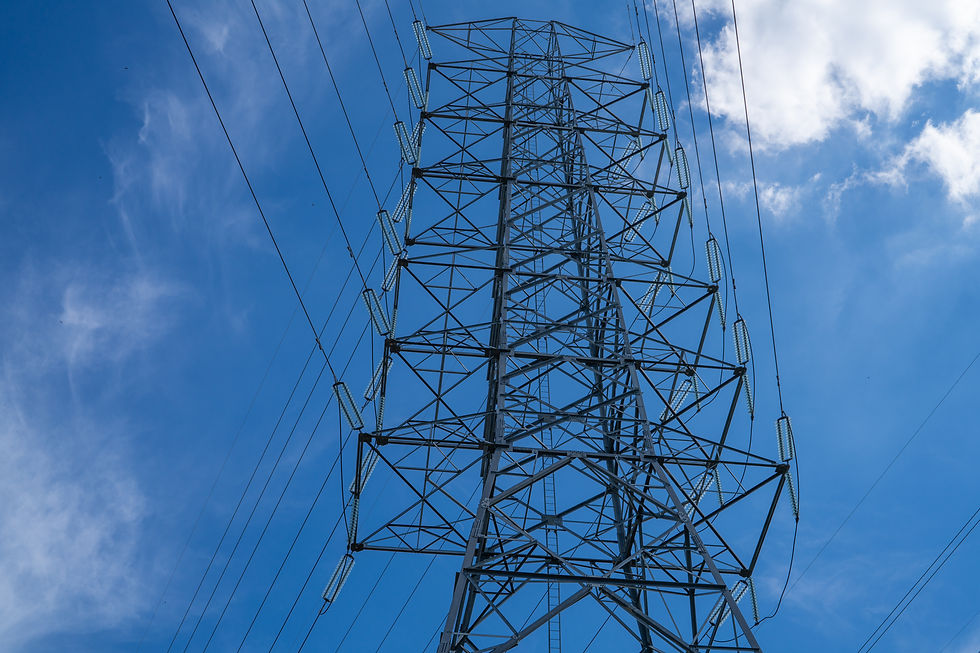6 Steps to Drastically Reduce Your Business Carbon Footprint
- Jennifer Crowley
- Jul 28, 2023
- 3 min read
Updated: Jul 9, 2024

As climate change continues to pose a significant threat to our planet, businesses have a crucial role to play in mitigating their carbon emissions and adopting sustainable practices. Reducing your business carbon footprint can contribute to a greener future while also improving your bottom line. In this article, we will outline five key steps businesses can take to reduce their carbon footprint and become more environmentally responsible.
1. Set Carbon Reduction Targets
Setting carbon reduction targets is an essential first step to reducing your business’s carbon footprint. Carbon targets define measurable objectives that help guide an organization’s efforts to become more environmentally conscious. By setting carbon reduction targets, companies can establish a clear direction and focus on their sustainability efforts. Targets provide a roadmap for implementing strategies and initiatives to reduce carbon emissions. They ensure that the organization is working towards specific and measurable goals, enabling better planning and decision-making.
2. Cultivate a Sustainable Supply Chain
A sustainable supply chain is an essential component of reducing a business’s carbon footprint. This involves working closely with suppliers and partners to ensure that sustainability practices are integrated throughout the entire supply chain. Implementing Environmental, Social, and Governance (ESG) criteria can help identify and select suppliers who prioritize sustainable practices, reducing the carbon intensity of your business’s products or services.
3. Environmental, Social, and Governance (ESG) Principles
ESG factors encompass various sustainability-related criteria that businesses should assess when evaluating their suppliers and partners. By integrating ESG principles into supply chain management, businesses can ensure sustainability practices are embedded throughout the entire value chain. This includes evaluating suppliers’ environmental impact, such as their carbon emissions, waste management practices, and resource efficiency.
Social factors involve assessing suppliers’ labour practices, worker health and safety, and community engagement. Governance considerations encompass transparency, ethics, and corporate governance practices. By prioritizing suppliers who demonstrate strong ESG performance, businesses can reduce their carbon footprint, mitigate social risks, enhance brand reputation, and contribute to a more sustainable and responsible supply chain.
4. Carbon Emissions – Net Zero

While reducing carbon emissions should be the primary focus, some emissions may be challenging to eliminate entirely. In such cases, businesses can invest in carbon offset projects to compensate for their unavoidable emissions. Carbon offset projects include initiatives such as reforestation, renewable energy development, and methane capture. By financially supporting these projects, businesses can effectively balance their carbon emissions and contribute to global emissions reductions.
5. Eliminate Waste Where Possible
Waste generation is a significant contributor to carbon emissions. Businesses can adopt measures to reduce waste throughout their operations, such as implementing recycling programs, optimizing energy and water usage, and minimizing packaging waste. By adopting circular economy principles, businesses can minimize resource consumption and maximize resource efficiency, significantly reducing their carbon footprint.
6. Engage Employees
Engaging employees in sustainability initiatives is crucial for achieving meaningful and lasting change within a business. By fostering a culture of sustainability and providing employees with the necessary training and resources, businesses can empower their workforce to participate in carbon reduction efforts actively.
Encouraging energy-efficient practices, promoting alternative transportation methods, and incentivizing eco-conscious behaviours can all contribute to reducing the overall carbon footprint of a business.
Congrats, You've Reduced Your Business Carbon Footprint!
By embracing these six key steps, businesses can not only contribute to the global effort in combating climate change but also strengthen their reputation, attract environmentally conscious consumers, and enhance their competitiveness in a rapidly changing world.
Together, let us forge a path toward a more sustainable future where businesses and the environment thrive hand in hand. The time for action is now, and by working collectively, we can create a world that is resilient, vibrant, and harmonious for generations to come.




















